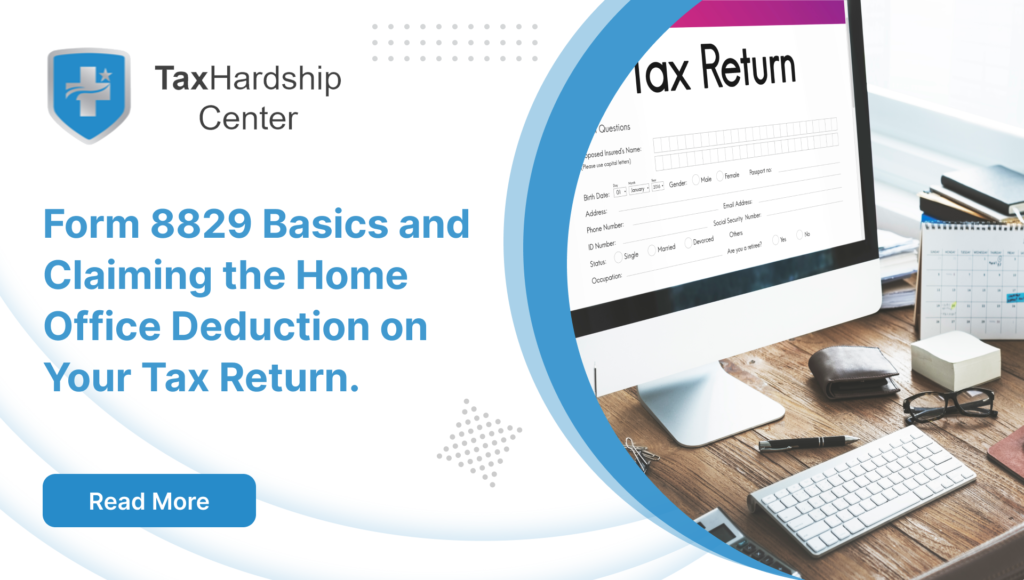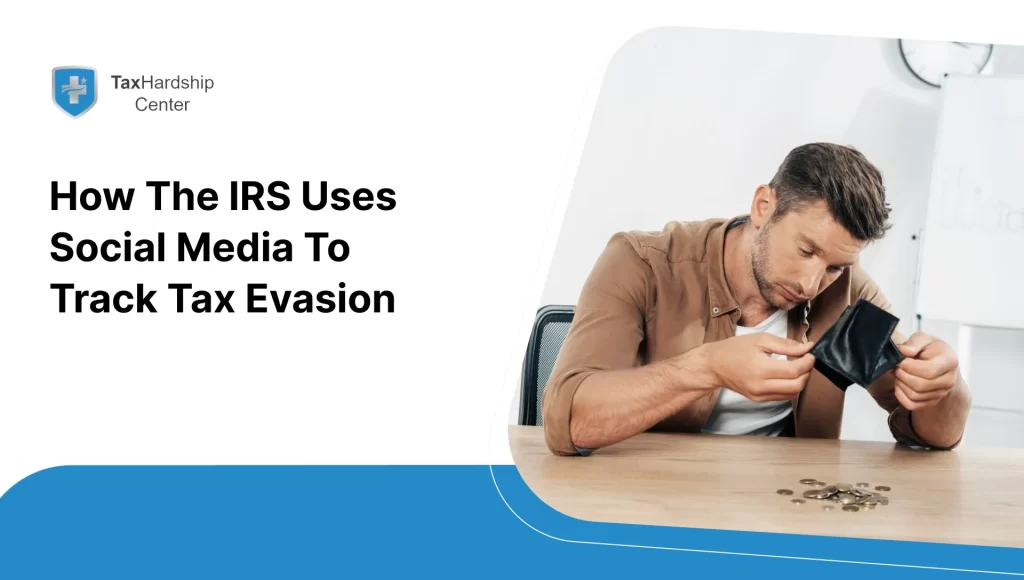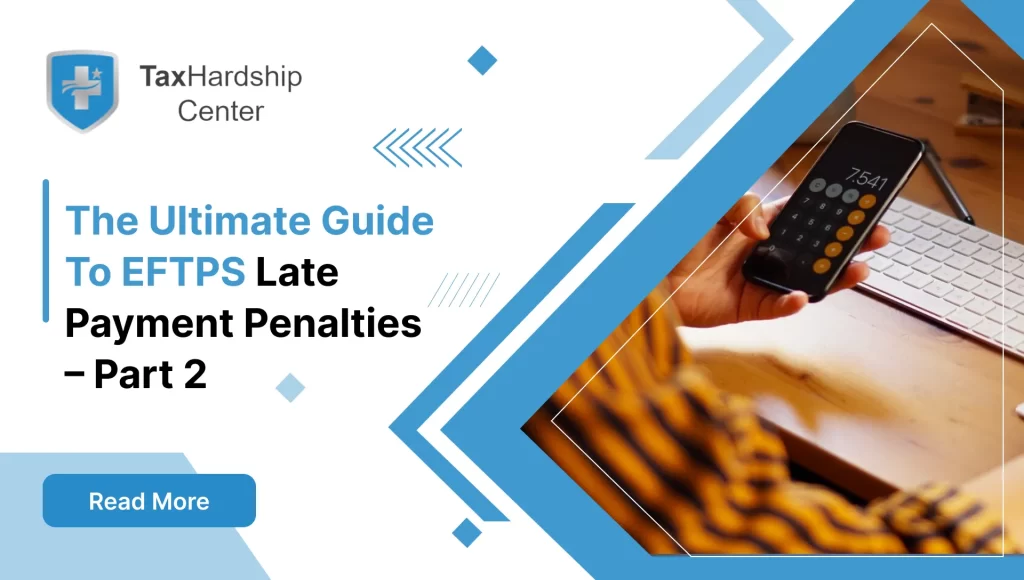Running a business from home can offer many conveniences. But did you know it can also result in tax benefits?
Form 8829, officially titled “Expenses for Business Use of Your Home,” is your gateway to claiming the home office deduction on your tax return. This deduction allows you to offset some of your home-related expenses by designating a dedicated workspace and meeting specific criteria. By effectively utilizing Form 8829 effectively, you can reduce your taxable income and put more money back in your pocket. This guide will delve into everything you need about Form 8829, including eligibility requirements, deductible expenses, and common mistakes to avoid.
What is Form 8829?
Form 8829, officially titled “Expenses for Business Use of Your Home,” is your gateway to claiming the home office deduction on your tax return. Offered by the Internal Revenue Service (IRS), this form helps you calculate the allowable deduction for the business portion of your home. But the benefit goes beyond simple calculations. By filing Form 8829, you can reduce your taxable income by deducting a portion of your usual household expenses as business costs. This can be particularly advantageous for self-employed individuals and employees who meet specific criteria and dedicate a space in their homes exclusively and regularly for business purposes. Understanding how to utilize Form 8829 effectively can be a valuable tax strategy, putting more money back in your pocket.
How Tax Hardship Center Eases Tax Concerns
Need help with Form 8829 for claiming the home office deduction? Let Tax Hardship Center ease your burden. Our expert team specializes in navigating complex tax forms, ensuring you maximize deductions while minimizing hassle. Whether self-employed or remote, we’ll guide you through the process, from calculating expenses to accurately completing the form. With Tax Hardship Center, tax season just got a whole lot easier. Schedule a free consultation with the Tax Hardship Center today and take the stress out of filing your taxes.
Who Should Use Form 8829?
Form 8829 is your gateway to claiming the home office deduction on your tax return. This deduction helps offset the costs of running a business out of your home. But who exactly qualifies to use this form?
Generally, Form 8829 is designed for self-employed individuals like freelancers, independent contractors, and sole proprietors. If your home office serves as your principal place of business, meaning it’s the central location for your business operations, then you’re a strong candidate for using this form. Regularly meeting clients or customers in your dedicated home office space further strengthens your eligibility.
Employees, however, should proceed with caution. While some remote workers can qualify for the home office deduction under specific circumstances, the criteria are stricter. Employees typically need a dedicated workspace used regularly and exclusively for business, and it cannot be a shared space. Furthermore, for employees, the home office must be their primary place of business, not just a secondary location to their employer’s office. If you need clarification about your eligibility as an employee, it’s always best to consult with a tax professional.
Special Considerations for Work-From-Home Employees: The Simplified Option
The Tax Cuts and Jobs Act of 2017 introduced some changes for work-from-home employees claiming the home office deduction. While it generally limited the ability for W-2 employees (those receiving a traditional paycheck) to deduct home office expenses on their tax returns through 2025, it did offer a simplified alternative.
This simplified option allows qualified W-2 employees to deduct a flat rate of $5 per square foot of dedicated workspace, up to 300 square feet. This eliminates the need for the more complex calculations involved in Form 8829. However, it’s essential to weigh the benefits. The simplified option might be quicker and easier. Still, it may offer a different deduction level than the detailed method using Form 8829, especially for employees with larger or significant home office expenses.
Understanding Eligibility Criteria for Using Form 8829
Claiming the home office deduction on Form 8829 requires the space to be dedicated to business use. There are three key criteria to consider:
Principal Place of Business: Your home office should be your primary business hub, even if you occasionally work from other locations. This doesn’t necessarily mean it’s the only place you work, but it should be the central location for your business activities.
Regular and Exclusive Use: The dedicated workspace in your home must be used regularly and solely for business purposes. This means it can’t be a spare bedroom that you also use for hobbies or personal activities. Even occasional personal use can disqualify the space.
Meeting Clients or Customers: While optional, regularly meeting with clients, customers, or patients at your home office strengthens your eligibility for the deduction. However, even without client visits, your home office can qualify if it meets the criteria of being your principal place of business and used exclusively for work.
What Kinds of Expenses Can I Deduct on Form 8829?
Form 8829 allows you to deduct a portion of your home office expenses. These expenses fall into two categories: direct and indirect.
Direct expenses are solely used for your home office and wouldn’t be incurred if the space wasn’t used for business. Examples include specific repairs or painting done exclusively in your home office, depreciation on furniture dedicated to your workspace (like a desk chair), or office supplies like printer ink and paper used for business purposes. These expenses are typically fully deductible on Form 8829.
Indirect expenses apply to your home, but a portion can be deducted based on the percentage of your home dedicated to business use. Consider utilities like electricity and internet, homeowner’s insurance, property taxes, or trash removal. For these expenses, you’ll need to calculate the business-use percentage of your home (square footage of your office divided by the total square footage of your home) and deduct that corresponding portion of the total expense.
Examples of Deductible Expenses for a Home Office
Deductible expenses for a home office include mortgage interest or rent, property taxes, utilities, insurance, maintenance, and depreciation. Remember to keep records and receipts to substantiate these expenses if the IRS inquires.
How to Complete Form 8829
Form 8829 might seem complex at first glance, but breaking it down into sections makes it more manageable. Here’s a step-by-step guide to walk you through each part of the form:
Part I: Portion of Your Home Used for Business
This section calculates the percentage of your home dedicated to business activities. It’s a simple calculation:
- Measure Your Dedicated Workspace: Grab a tape measure and determine the square footage of the area in your home that you exclusively use for business purposes.
- Measure Your Entire Home: Take the total square footage of your entire residence.
- Calculate the Business Use Percentage: Divide the square footage of your dedicated workspace (from Step 1) by the total square footage of your home (from Step 2). Multiply this number by 100 to express it as a percentage. This percentage will be crucial throughout the form as it determines the portion of your home expenses that qualify for the deduction.
Part II: Figure Your Allowable Deduction
Here’s where you list the various expenses of maintaining your home office and calculate the deductible amount.
- List Indirect Expenses: This includes shared expenses for your entire home, like mortgage interest or property taxes.
- Apply the Business Use Percentage: Remember the percentage you calculated in Part I? Here, you’ll multiply each indirect expense by that percentage. This gives you the deductible portion of those shared expenses.
- Direct Expenses: In addition to indirect expenses, list any direct expenses directly related to your home office, such as furniture depreciation or specific repairs made to your workspace.
Part III & IV: Delving Deeper into Depreciation and Carryover Expenses
These sections handle more specific scenarios:
Part III: Depreciation of Your Home: This section allows you to deduct a portion of the wear and tear on your home attributable to business use. Calculating depreciation can be more complex, and the IRS provides resources to help you navigate this process.
Part IV: Carryover of Un-allowed Expenses to 2018 (Note: Update the year as needed): Sometimes, your total home office expenses might exceed your business income for the year. This part allows you to “carry over” any unused deduction portion to the following tax year.
Remember, this is a simplified overview. For detailed instructions and specific calculations, consult the official IRS instructions for Form 8829.
Simplified Option vs. Detailed Method
The IRS provides two options for calculating your home office deduction, each with its advantages and drawbacks:
Simplified Option: This method offers a quick and easy way to claim a deduction. It uses a flat rate of $5 per square foot of your dedicated workspace, up to a maximum deduction of $1,500 (300 sq ft x $5). No detailed record-keeping is required, making it ideal for those who don’t have extensive home office expenses. However, the simplified option may not be the most advantageous if your actual expenses exceed $1,500.
Detailed Method (Form 8829): This method involves a more detailed calculation based on the actual expenses you incur for operating your home office. You’ll need to track and itemize expenses like utilities, mortgage interest (or rent), and depreciation on the business portion of your home. While this method requires more effort upfront, it can lead to a larger deduction than the simplified option.
Choosing the Right Method:
The best method for you depends on two key factors: the potential deduction amount and your comfort level with record-keeping.
If your estimated home office expenses are less than $1,500, the simplified option might be the quickest and easiest way.
However, if you anticipate exceeding $1,500 in expenses, the detailed method using Form 8829 could offer a more significant tax benefit.
Common Mistakes to Avoid When Filing Form 8829
While Form 8829 can be a valuable tool, there are some key mistakes to avoid when claiming your home office deduction:
- Eligibility Errors: Ensure your workspace meets the “regular and exclusive use” test. This means it’s dedicated solely to business and not used for personal activities.
- Mixing Personal and Business Expenses: Don’t claim deductions for areas of your home not used for business. For shared expenses like utilities, only deduct the portion based on your business use percentage.
- Missing Out on Carryovers: If your calculated deduction exceeds the IRS limitations in a given year, you can carry the unused amount to future tax years. Take advantage of this potential tax benefit.
- Depreciation Dilemmas: Calculating depreciation on your home for business use can be tricky. Consider consulting a tax professional to ensure you use the correct method and avoid errors.
Navigating Potential IRS Scrutiny and Audit Risks
While claiming a home office deduction is a legitimate tax benefit, it’s important to be aware of potential IRS scrutiny. Here’s how to minimize your audit risk:
- Keep meticulous records: Maintain clear and detailed records of your home office expenses, including receipts, invoices, and documentation of the business use of your workspace.
- Use Form 8829 accurately: Ensure you’ve completed Form 8829 correctly, following the IRS instructions carefully.
- Confirm eligibility: Double-check that your home office meets all the IRS criteria for regular, exclusive, and principal place of business use.
In the unlikely event of an IRS audit, stay calm and be prepared to present your documentation. This will demonstrate your compliance with the regulations and help to resolve the audit smoothly.
Conclusion:
Claiming the home office deduction on Form 8829 can be a valuable tax strategy for self-employed individuals and eligible employees who work remotely. By familiarizing yourself with the eligibility criteria, understanding the calculation process, and keeping meticulous records, you can maximize your tax benefits and minimize the risk of errors or audits.
Why Tax Hardship Center?
1. Hassle-Free Assistance:
Say goodbye to sleepless nights and endless tax-related stress. At the Tax Hardship Center, we believe in simplifying the complex. Our team of experts is dedicated to guiding you through every step of the process, ensuring that your tax concerns are met with precision and care.
2. 14-Day Money Back Guarantee:
We’re so confident in our ability to ease your tax worries that we offer a 14-day money-back guarantee. If, for any reason, you’re not satisfied with our service, we’ll gladly refund your investment. Your peace of mind is our top priority!
3. Free Consultation:
Are you curious about how we can transform your tax experience? Book a free consultation now! Our team will assess your situation, answer your questions, and provide free insights tailored to your needs.
4. Nationwide Coverage:
No matter which corner of the United States you call home, the Tax Hardship Center covers you. We proudly serve all 50 states, bringing our expertise to your doorstep. Wherever you are, our commitment to excellence follows.
FAQs:
1. Who can use Form 8829?
Form 8829 is generally designed for self-employed individuals like freelancers, independent contractors, and sole proprietors. Employees can also qualify under specific circumstances, but the criteria are stricter. In all cases, the dedicated workspace must be used regularly and exclusively for business purposes.
2. What are the different methods for calculating the home office deduction?
The IRS offers two options:
- Simplified Option: This method provides a flat rate deduction of $5 per square foot of dedicated workspace, up to a maximum of 300 square feet.
- Detailed Method (Form 8829): This method involves a more detailed calculation based on the actual expenses incurred for operating your home office, such as utilities, mortgage interest, and depreciation.
3. Which method should I choose?
The best method depends on your estimated home office expenses and your comfort level with record-keeping. The simplified option might be easier if your expenses exceed $1,500. However, if you anticipate exceeding $1,500, the detailed method using Form 8829 could offer a larger deduction.
4. What are some common mistakes to avoid when filing Form 8829?
Common mistakes include claiming deductions for ineligible expenses, failing to maintain proper records, and not understanding the eligibility criteria for the home office deduction.
5. What should I do if I get audited?
In the event of an IRS audit, stay calm and be prepared to present your documentation, such as receipts, invoices, and proof of business use for your home office.








